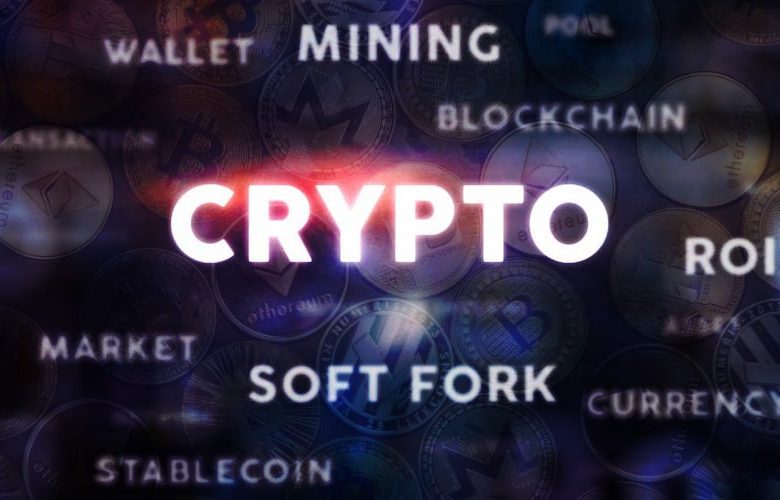Education
Commonly Used Terminology In Blockchain and Crypto

- 51% attack: A majority attack that occurs when more than half of the computer power on a network is run by a single person or a single group of people that control more than half of the network’s hashing power.
- Airdrop: A marketing campaign that refers to the expedited distribution of a cryptocurrency through a population of people.
- Alt-coin: Any coin or token other than Bitcoin.
- Attestation Ledger: A register or account book created for the purpose of providing support/evidence of transactions.
- Addresses: A unique address that identifies where a cryptocurrency sits on the blockchain.
- Algorithm: Mathematic instructions coded into and implemented by computer software to produce a desired outcome.
- All-time high: Highest price ever achieved by a cryptocurrency. Abbreviated to ATH.
- All-time low: Lowest price ever achieved by a cryptocurrency. Abbreviated to ATL.
- Altcoins: A category that includes all coins other than Bitcoin, the first and most successful of all the cryptocurrencies.
- Anti-money laundering: International laws and regulations designed to prevent criminals from laundering money through cryptocurrencies into real-world cash. Also referred to by initialsm AML.
- Application-specific integrated circuit: Computer hardware – similar to a graphics card or a CPU – designed to mine cryptocurrency.
- Arbitrage: The act of buying from one exchange and then selling it to the another exchange if the margin between the two is profitable.
- Atomic swap: A way of letting people directly and cost-effectively exchange one type of cryptocurrency for another, at current rates, without needing to buy or sell.
- Bag: A large quantity of units in a cryptocurrency.
- Bear/Bull Market: A market condition in which prices are falling or rising, respectively.
- Blockchain: A public ledger of all cryptocurrency transactions that have ever been executed.
- Block Height: The number of blocks in the blockchain.
- Block Reward: A reward given to miners who have successfully hashed a transaction block.
- Cold Storage: A storage method used to keep private keys offline, away from any potential online threat.
- Cold Wallet: A cryptocurrency wallet that is not connected to the internet.
- Coin: A unit of a cryptocurrency.
- Consensus: A general agreement among network participants about the validity of the transactions on the blockchain.
- Cryptocurrency: A form of digital asset that uses cryptography as its main security measure to control the creation of additional units and verify the transfer of assets.
- Cryptography: The practice of using complex mathematics to encrypt and decrypt data.
- Decentralization: A phenomenon or rather an environment where no one has absolute control over the network. All actions occur after most of the network has provided its explicit consent, thus removing the dependency from a single member or administrator.
- Directed Acyclic Graph (DAG): A type of data structure that does not have a beginning or an end.
- Double Spending: The act of spending the same cryptocurrency token more than once.
- Encryption: A process of converting plain text into ciphertext, making it unreadable to anyone without the key to decrypt it.
- Exchange: A platform that allows users to buy, sell, and trade cryptocurrencies.
- Fiat: A currency issued by a government or central bank, like the US Dollar or Euro.
- Fork: A split in the blockchain that leads to the creation of two separate chains.
- Genesis Block: The very first block on a blockchain network and can also be considered as the pioneering record.
- Gossip Protocol: A protocol used for spreading messages across a peer-to-peer network.
- Hash Collision: When two different inputs produce the same output.
- Hash Function: A function that takes an input of any length and produces an output of fixed length.
- Hashrate: The measure of how many hashes a device can perform in a given amount of time.
- Hyperledger Fabric: An open source, enterprise-ready distributed ledger technology.
- Immutability: Once the data is published on the chain and a block is created for the data, it cannot be changed.
- Mainnet: A public blockchain network that is used to transfer and store real cryptocurrency.
- Merkle Root: A data structure used to store the hashes of all transactions in a block.
- Mining: The process of creating a new block on the blockchain.
- Non-Fungible Token: A token that represents a unique asset, such as a piece of digital art or a game item.
- Peer-to-Peer: A network in which two computers can communicate directly with each other without needing to go through a third party.
- Proof of Work: A consensus mechanism that requires miners to solve a complex mathematical puzzle in order to add a.
- Private Key: A unique string of characters used to access and manage a user’s cryptocurrency.
- Proof of Stake: A consensus mechanism that requires users to stake a certain amount of cryptocurrency to participate in the network.
- Public/Private Key: A pair of cryptographic keys used to verify the identity of a user.
- Quantum Computing: A type of computing that uses quantum-mechanical phenomena, such as superposition and entanglement, to perform operations on data.
- Smart Contracts: Self-executing contracts that are stored on the blockchain and can be used to facilitate, verify, or enforce the terms of a contract.
- Soft Fork: A change to the blockchain protocol that is backward compatible and does not require all nodes to upgrade.
- Solidity: A programming language used to write smart contracts for the Ethereum blockchain.
- Stablecoin: A type of cryptocurrency that has its value pegged to a stable asset, such as the US dollar or gold.
- Testnet: A blockchain network that is used for testing purposes.
- Transaction Fee: A small fee paid to miners for processing cryptocurrency transactions.
- Wallet: A digital storage system that enables users to store, send, and receive cryptocurrency.
- Whitepaper: A document that outlines the features of a cryptocurrency or blockchain project.



